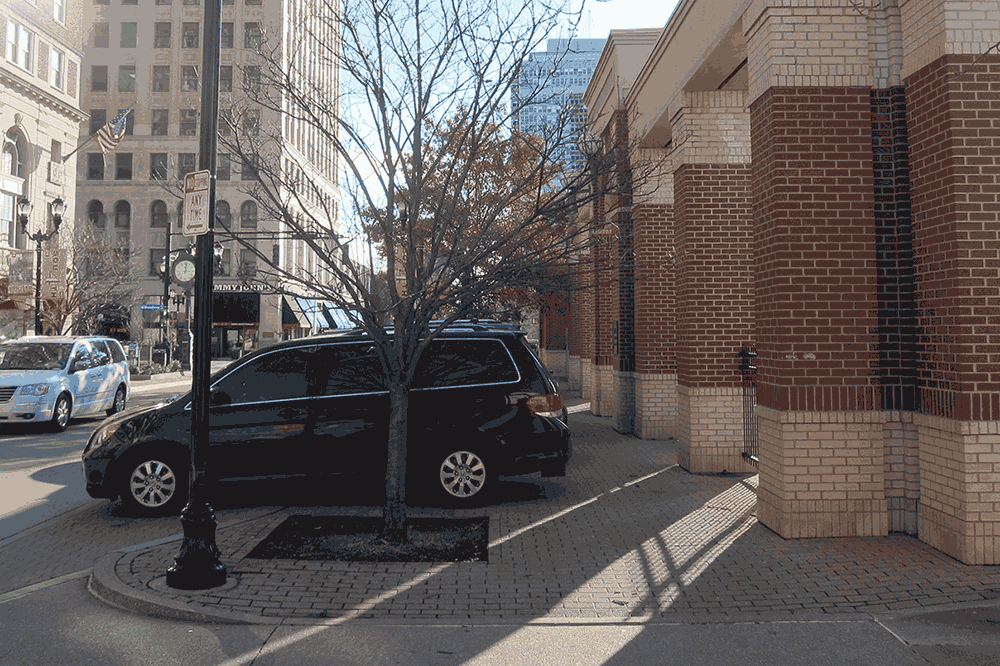Congratulations to Porter Stevens for being first to correctly identify last week’s sidewalk challenge as William Street looking north from Frankfort Avenue in Clifton. For your chance to win an official Broken Sidewalk magnet, tell us where this week’s sidewalk is located in the comments below. (The rules: Leave a real email so we can get in touch if you win; No repeat winners for four months; Comments must be left on this news roundup.) Good luck!
And now on with the week’s top urbanism #cityreads from Broken Sidewalk Editor Drew Tucker:
Astrophysicists show how cities on Earth evolve in the same way as galaxies in space. “Henry Lin and Abraham Loeb at the Harvard-Smithsonian Centre for Astrophysics have used models for showing how galaxies evolve based on matter density to propose a unifying theory for scaling laws of human populations… All of which suggests that the underlying laws that govern some fairly complex human behaviours are the same as those that determined the formation of the very galaxy we live in.” Quartz
When It Comes to Falling in Love With Cities, Size Matters. Sarah Laskow makes the claim, that for most folks, loving your city is more likely than loving a specific neighborhood. Clearly, Sarah has never been to Louisville. Next City
How Local Sales Taxes Target the Poor and Widen the Income Gap. Local tax initiatives are always regressive and punitive to low income families. City Lab
As Other Cities Turn Away, Seattle Turns to Tent Cities for the Homeless. Seattle continues to get it right around issues of homelessness. Hows that for a compassionate city? Next City
The Supreme Court may soon disarm the single best weapon for desegregating U.S. housing. “The case, Texas Department of Housing and Community Affairs v. The Inclusive Communities Project, poses a fundamental question about the power of the 1968 Fair Housing Act, which outlawed discrimination on the basis of race in housing decisions. Does the law prohibit only intentional discrimination, or does it also apply to seemingly race-neutral policies that still have the effect of harming minorities?” Washington Post
Making the Measure: A Toolkit for Tracking the Outcomes of Community Gardens and Urban Farms. We live in an age where quantitative data is fetishized, sometimes putting an unfortunate burden on urban interventions that don’t seem to rely on that type of information. Luckily, some designers came up with this solution. Sustainable Cities Collective
This Interactive Map Shows How Americans Get To Work. This map will give you a county by county breakdown of how folks get to and fro. It also does some interesting work around revealing the types of industry in the area. FastCo Design
Boehner says fixing U.S. infrastructure ‘critically important’. You heard it here first folks. Step one: admit there is a problem. Step two: find a way to get Congress to realize infrastructure revitalization costs money. Reuters
How much money does the Super Bowl really bring a host city? We might also ask, “How much of that money stays in the city?” Urbanful
How Driverless Cars Could Make Traffic Dramatically Worse. Last year, while I was at MIT for a ‘smart cities’ conference, there were two presentations about driverless vehicles. Neither could answer a simple question about “is this a good idea?” or “How will we develop the infrastructure for all these new cars on the road?” CityLab



4th street right across from the Brown Hotel, near Broadway. Such a pretty block!
That sweet parking spot is in front of the Kindred building, 4th near Broadway
South 4th across the street from the Brown Hotel.
4th Street looking south towards Broadway outside of the kindred headquarters?
SOuth 4th in front of the Kindred loop @ Broadway.
One summer in graduate classes I stumbled through that very sidewalk in that direction on 4th nearly every Thursday coming back from “studies” at the Theater Square BBC on my way to catch the 11 or 11:30 bus at 4th and Broadway back into Old Louisville where my apartment was (Hill St). Those were some times.